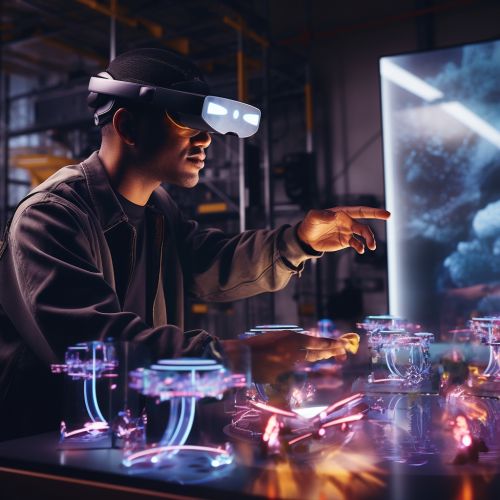The Role of Augmented Reality in Machine Operation Training
Introduction
Augmented reality (AR) is a technology that overlays digital information onto the real world, enhancing the user's perception and interaction with their environment. In the context of machine operation training, AR provides a powerful tool for instruction and practice, allowing trainees to interact with virtual machinery in a safe, controlled environment. This article explores the role of augmented reality in machine operation training, examining its applications, benefits, and future potential.


Applications of AR in Machine Operation Training
AR technology has a wide range of applications in machine operation training. It can be used to create virtual replicas of machinery for trainees to interact with, allowing them to gain hands-on experience without the risk of damaging expensive equipment. Additionally, AR can provide real-time feedback and instruction, guiding trainees through complex tasks and helping them to develop their skills more efficiently.
Virtual Replicas
One of the primary applications of AR in machine operation training is the creation of virtual replicas of machinery. These replicas allow trainees to interact with machinery in a safe, controlled environment, reducing the risk of accidents or damage to equipment. They also provide an opportunity for trainees to familiarize themselves with the machinery before operating it in a real-world setting.
Real-Time Feedback and Instruction
AR can also provide real-time feedback and instruction to trainees. This can be particularly useful in complex tasks, where immediate feedback can help trainees to correct mistakes and improve their performance. The use of AR for real-time feedback and instruction can also reduce the need for human instructors, making training more efficient and cost-effective.
Benefits of AR in Machine Operation Training
The use of AR in machine operation training offers a number of benefits. These include improved safety, increased efficiency, and enhanced learning outcomes.
Improved Safety
One of the key benefits of using AR in machine operation training is improved safety. By allowing trainees to practice on virtual machinery, AR reduces the risk of accidents and injuries. This is particularly important in industries such as construction and manufacturing, where machinery can be dangerous to operate without proper training.
Increased Efficiency
AR can also increase the efficiency of machine operation training. By providing real-time feedback and instruction, AR can help trainees to learn more quickly and effectively. Additionally, the use of virtual replicas can reduce the need for physical machinery, saving time and resources.
Enhanced Learning Outcomes
AR has been shown to enhance learning outcomes in machine operation training. By providing a hands-on, interactive learning experience, AR can help trainees to develop a deeper understanding of machinery and its operation. This can lead to improved performance and productivity in the workplace.
Future Potential of AR in Machine Operation Training
The future potential of AR in machine operation training is vast. As technology continues to advance, it is likely that we will see even more sophisticated and effective applications of AR in this field.
One area of potential growth is the use of AR for remote training. With AR, trainees could potentially practice operating machinery from anywhere in the world, reducing the need for travel and making training more accessible.
Another area of potential growth is the use of AR for advanced skill development. As AR technology becomes more sophisticated, it could be used to simulate more complex and challenging tasks, helping trainees to develop advanced skills and expertise.
